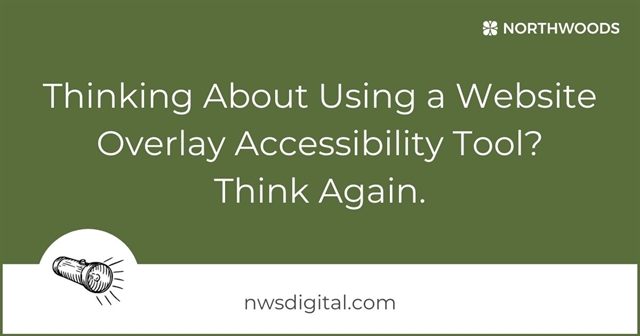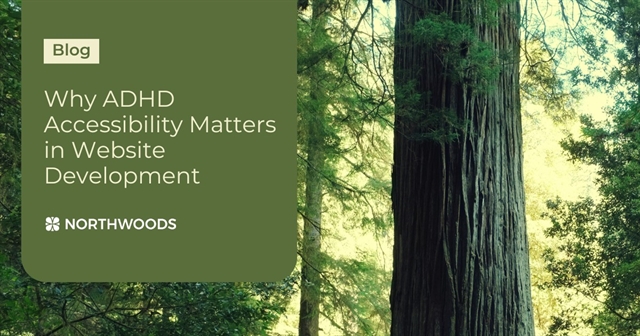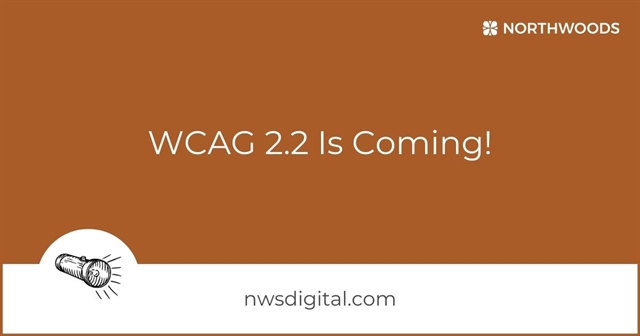By Sydney Shimko
October 9, 2023
4 Minute Read
Website accessibility first came to marketers’ and business owners’ attention in the mid-1990s. So surely by now, nearly 30 years later, accessible websites must be the norm, right? Unfortunately, not.
Approximately 26% of Americans live with a disability such as mobility, hearing or visual impairments, dyslexia, learning disabilities, and even temporary conditions such as a broken hand. Nearly half of them access the internet regularly, and many of them are seniors with significant discretionary spending power.
And instead of subsiding, as we’d expect as more and more businesses become aware of the need, accessibility lawsuits continue to increase dramatically. Forbes anticipates more than 4,000 ADA website lawsuits by the end of this year alone.
Yet, despite documented disability numbers, growing lawsuits, established and mature accessibility guidelines, and even Federal accessibility requirements for certain businesses that receive government funds, most companies continue to ignore web accessibility – to their peril.
Don’t be one of them! Here’s why you should make your website accessible and how to do so.
The Top 1 Million Home Pages Aren’t Accessible; Why Should Mine Be?
The WebAIM Million project tested the top 1 million home pages during the past 3 years and found that 96.3% of them weren’t compliant with web accessibility guidelines.
In fact, these pages had an average of 50 errors each. And that’s just those detected using automated accessibility testing tools, which can only reliably test against roughly 25% of Web Content Accessibility Guidelines (the gold standard for web accessibility). If humans tested these pages, as well, we’d find even more issues.
If the majority isn’t focused on making their websites accessible, why should your business be?
- For one, you can stand out in a sea of non-compliant businesses to build goodwill and positive brand perception among an under-served and desirable audience.
- Second, ignoring a huge pool of regular internet users means you’re losing out on a sizeable percentage of potential revenue.
- Third, focusing on accessibility reduces the risk of legal action against your organization. Especially if you receive Federal funding, you may be required to meet accessibility guidelines by law. It’s important to check with your legal counsel to determine your risk.
- Lastly (and most importantly), it’s just good business. It’s well-documented that improving accessibility improves usability for all site visitors. An accessible site showcases your commitment to diversity, equity, and inclusion efforts, as well. A rising tide lifts all boats, as the saying goes.
What’s Included in a Web Accessibility Audit
The best way to find out where your site is falling short of meeting WCAG accessibility guidelines is with a comprehensive accessibility audit.
Using automated testing tools is a good first step in identifying some of the most common accessibility errors. There are lots of great options available. Our team recommends these.
Many organizations stop at automated testing. But it’s vital to augment automated testing with human testing, as well. That’s where turning to web accessibility experts like Northwoods is critical.
The best and most comprehensive website accessibility audits include the following:
- Automated WCAG Testing. Automated tools are used to crawl a site to identify low-hanging fruit.
- Manual WCAG Testing. Humans review your site’s code and test your site with use cases for unique pages.
- Assistive Technology Testing. Accessibility experts use screen readers and other tools that people with disabilities use, based on unique use cases, to uncover issues.
Ultimately, the goal is to produce an in-depth WCAG audit report that identifies WCAG accessibility violations and how to fix them.
Web Accessibility Remediation
Once your website accessibility audit is complete, you’ll receive a list of issues that need to be remediated in order to achieve compliance with WCAG standards. At this time, sites should generally aim to achieve WCAG 2.1 AA standards (and WCAG 2.2 when they’re published).
At Northwoods, our accessibility audit report provides a comprehensive list of identified issues with corresponding detail. Our goal is not to simply hand you a list of issues but to help you understand them and to provide guidance on how to resolve them.
We’ll work collaboratively with you to help remedy identified issues and guide both your technical and website teams through any fixes that can be done in-house. We are also happy to address any issues that your team is unable to. We’ll continue to act as consultants to you throughout the remediation phase, as you need us.
Post-Accessibility Audit
Compliance with web accessibility guidelines is never a one-and-done project. It requires ongoing commitment to ensure that you remain in compliance.
As your website grows and changes over time, new content, images, and design updates can affect compliance with WCAG standards. It’s critical to train both current and new team members on accessibility best practices and to periodically audit your site.
With a dedicated, ongoing focus on accessibility, your company can rise above the rest, drive more revenue, avoid legal action, and showcase your commitment to making the internet an inclusive place that’s inviting and usable for all.
We’re here to help!
To get started with a web accessibility audit, reach out to us!
Related Blog Posts

Many accessibility tools and products on the market “bolt on” to your website as third-party scripts or plugins. They claim to make websites more accessible to end users and/or protect site owners from accessibility lawsuits. Sounds like a great, easy solution, right? Here's what you need to know.

We tend to think about web accessibility in terms of visual and physical impairments. But how does having a neurodivergent disorder like ADHD alter a user’s experience of the web? And how can website managers make their site a friendlier place for them?

Final publication of the newest version of the Web Content Accessibility Guidelines, WCAG 2.2, is expected in 2023. Here's what you need to know about the updated standards to ensure your website is accessible to all.